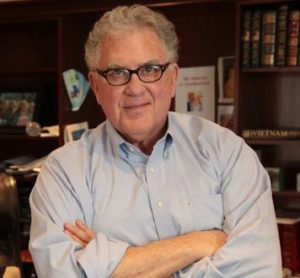I recently read an article written by Evan Sparks, who is the editor-in-chief of the ABA Banking Journal and vice president for publications at the American Bankers Association.
His article hit home and stirred up some memories for me –

some good, most bad.
Years ago, I was the director of the D
epartment of Banking and Finance in Nebraska. Not nearly as good or as effective our own Commissioner Mick Thompson, to be sure, but I was there on the front lines of the banking industry, nevertheless.
It was the mid-80s, when Nebraska’s largest industry, agriculture, collapsed. My first day on the job was a day of trying to get my arms around what, exactly, I’d agreed to do for the governor. On my desk I saw a stack of documents, about 3-feet high, and I asked the deputy what those documents were and what did they represent.
“Those are what we call ‘reports of examinations’ of banks we’ve examined over the last 12 months,” he told me. “I’m afraid that you need to review each one of them and then make some tough decisions.”
Hmm. That didn’t sound good.
At the time, Nebraska also had a requirement that any lender in any state-chartered bank had to be licensed by the Department. I had the sole authority to approve, deny, or withdraw such a lender’s license.
Cool, I thought. That’s leverage I might be able to use at some point, even though the way the statute read didn’t seem “right” to me. (We later fixed it.)
There was no “state banking board,” like the one we have in Oklahoma. In fact, as I read through the banking code, I discovered there was no one who could successfully change or override any decision I’d made, about a lender’s license or anything else. Not even the Governor. Cool. Again.
But as I began reading each of the reports in the stack, I was struck by the fact that the percentage of classified loans compared to capital was pretty high. The smallest percentage in that stack was more than 450% and the classification percentage went up dramatically after that.
The loan portfolios of these banks, for the most part, consisted of agricultural loans of some sort, and they were not performing, to put it mildly. We struggled for nine months as I tried to do everything I could to help bankers operating under stress.
Finally, it became clear: there was no way these smaller banks could be saved without more capital, which none of the owners had. I ended up closing most of them, among others.
It was a very emotional time, for bankers, their customers and for me personally. I knew these people. Some of them were close friends. But at that time, the FDIC was not willing to allow them to continue operating with deposit insurance, and there was nothing I could do to change their mind.
The FDIC didn’t have authority to close banks, but they did have the ability to withdraw deposit insurance. We couldn’t let that happen. So, I closed a bunch of them. Some of the worst days of my life was watching what happened to small farmers, ranchers and their communities after I had closed their bank and turned things over to the FDIC receiver to liquidate.
It took some time, but agricultural production soon rallied and continued to remain viable. For the past 10 years or so, agriculturally-related business, ranches and farms have for the most part thrived. But not all of them were looking prosperous.
As their bankers began to feel the pinch and started to worry about survivability of some of their ag borrowers, along came the COVID-19 virus and the world changed. Almost everything stopped operating, including some farms and ranches.
I’ve been around awhile, and I’ve never experienced anything quite like this virus. For bankers, both young and old and those who financed food businesses in particular, they are experiencing a down cycle for the first time. Ever. That’s why Evan’s article struck such a chord.
Producing our nation’s (and much of the world’s) food supply was already a tough way for farmers and ranchers to make a living. Now it’s become even more difficult, and it makes me wonder when Federal Bank regulators will decide that enough is enough.
This is the issue that keeps me up at night. My wife and I have been under self-quarantine since March 18, and I can’t “un-think” this issue. All I can do is pray.
Most of you bothering to read this far know you’re in a “relationship” business. But what is happening to those relationships? Many of your customers have lost their jobs, or been forced to close their businesses, or have otherwise become increasingly and painfully stressed – economically – by the coronavirus. How do you establish, build and/or maintain those customer relationships in a society that’s been “closed” for the past two-plus months and may continue that way for several weeks or perhaps even months?
As you begin to understand that this may be your “reality” for a while, what are you prepared to do? That’s the question I keep asking myself. So far, I don’t have a good answer.
 Oklahoma Bankers Association We make bankers better!
Oklahoma Bankers Association We make bankers better!
